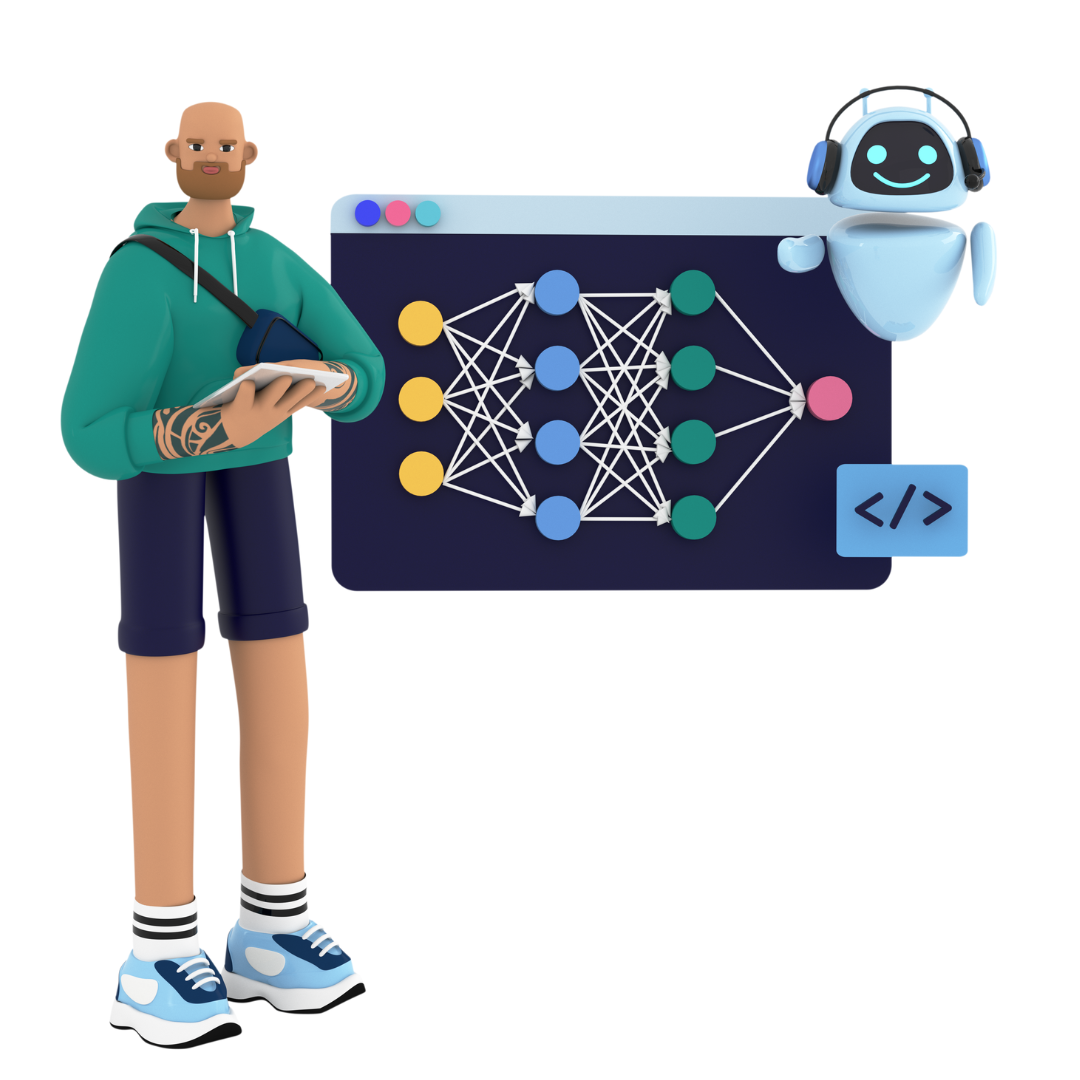Sequential Data Assignment Help | Online Tutors
Welcome to our Sequential Data Assignment Help service, a platform dedicated to helping students with assignments, homework, projects, exams & coursework. Our Python Assignment Help experts help students with complex Sequential Data concepts like Time series forecasting, Anomaly detection, Next-item recommendation, Motif discovery, Event segmentation, Symbolic representation & many more.
At our Sequential Data Assignment Help provider, we delve into the essence of sequences and their profound relevance in diverse packages, which include diverse applications, such as time series analysis, natural language processing, bioinformatics, and more. Whether you're a student, researcher, or seasoned professional, our purpose is to cater to all degrees of expertise within the realm of sequential records.
Our user-friendly method makes implementing sequential data analysis a breeze, as we provide step-by-step publications and sensible code examples. Through these sources, we ensure a smooth and powerful mastering revel, empowering you to use sequential information evaluation with precision.
By exploring our Sequential Data service, you'll gain valuable insights and best practices for accurate analysis and data-driven decision-making. Mastering this invaluable skillset will undoubtedly give you a competitive edge in your field. Begin your journey into the captivating world of sequential data with us and unlock the full potential of data sequences. Start exploring our "Sequential Data" page today and embrace the power of sequential data analysis!
What is Sequential Data?
Sequential data refers to a type of data that is organized and recorded in a specific order, where the sequence of events or observations holds essential information. Unlike traditional datasets with independent data points, sequential data maintains temporal relationships between consecutive entries. This data structure finds widespread applications in various fields due to its ability to capture patterns and trends over time.
In the context of time series analysis, sequential data represents measurements taken at successive intervals, making it valuable for forecasting future values based on historical patterns. For instance, stock prices, weather data, and sensor readings are often treated as sequential data to predict future trends.
In natural language processing, sequential data is prevalent as sentences and texts have a definite sequence of words, allowing algorithms to understand context and meaning in language. Sentiment analysis, machine translation, and speech recognition are some applications benefiting from sequential data analysis.
Understanding and processing sequential data are vital for developing advanced algorithms and models that can efficiently handle time-based or sequential patterns. Mastery of this field empowers professionals to make accurate predictions and informed decisions based on the underlying patterns in the data sequence.
Why Sequential Data is Challenging?
Sequential data analysis comes with its own set of challenges due to its temporal nature and complex patterns. The following factors contribute to the intricacy of working with sequential data:
- Temporal Dependency: Unlike independent data points, sequential data exhibits temporal dependency, where each entry relies on its preceding values. This interdependence makes it challenging to apply conventional statistical methods that assume data independence.
- Variable Length: Sequential data often varies in length, leading to difficulties in standardizing data for analysis. Handling sequences of varying lengths requires specialized techniques like padding, truncation, or dynamic pooling, which can be complex to implement.
- Feature Engineering: Extracting meaningful features from sequential data demands careful consideration. Identifying relevant patterns and transforming them into actionable features requires domain knowledge and expertise.
- Long-Range Dependencies: Some sequential data contains long-range dependencies, where events in distant time steps affect each other. Capturing such dependencies is complex, as conventional models may struggle to maintain context over extended periods.
- Computational Complexity: Sequential data analysis often requires sophisticated models, such as recurrent neural networks and transformers, which are computationally intensive and may demand substantial resources.
Types of Sequential Data
Sequential data can take various forms, each presenting distinct characteristics and application areas. Understanding the types of sequential data is essential for choosing appropriate analysis techniques. Here are some common types:
- Textual Data: Textual data represents a sequence of words or characters, making it applicable in natural language processing tasks like sentiment analysis, text generation, and language translation. Analyzing textual data involves techniques like text embedding, recurrent neural networks (RNNs), and transformers.
- DNA Sequences: In bioinformatics, DNA sequences represent genetic information encoded in the sequence of nucleotides. Analyzing DNA sequences is crucial for gene identification, mutation detection, and evolutionary studies.
- Speech and Audio Data: Speech and audio data comprise sequences of sound waves, commonly analyzed in speech recognition, speaker identification, and music classification.
- Clickstream Data: Clickstream data tracks users' interactions with websites, representing a sequence of clicks, page visits, and actions. Analyzing clickstream data helps optimize user experiences and understand customer behavior.
- Sensor Data: Sensor data captures measurements over time from various sensors, such as temperature, pressure, and motion sensors. It finds applications in IoT, smart cities, and environmental monitoring.
- Event Sequences: Event sequences represent sequences of discrete events, such as customer transactions, log entries, or user activities. Analyzing event sequences is vital for anomaly detection and process optimization.
Applications of Sequential Data
Sequential data plays a vital role across diverse domains, owing to its temporal nature and ordered structure. The applications of sequential data encompass a wide range of fields, each leveraging its unique characteristics for valuable insights and informed decision-making:
- Finance: Financial markets extensively utilize time series data for predicting stock prices, managing risks, and facilitating algorithmic trading. Analyzing sequential data enables the identification of market trends and patterns, aiding investors in making well-informed choices.
- Natural Language Processing (NLP): Textual data, a form of sequential data, drives various NLP applications like sentiment analysis, machine translation, and chatbots. Through the analysis of sequential text data, systems gain better language comprehension and interaction capabilities.
- Healthcare: In healthcare, sequential data is crucial for patient monitoring, predicting diseases, and evaluating treatment outcomes. Time series analysis of patient vitals aids in early anomaly detection, leading to improved patient care.
- Speech Recognition: Sequential audio data is heavily employed in speech recognition systems, virtual assistants, and voice-controlled applications. Techniques like recurrent neural networks (RNNs) enable accurate conversion of speech to text.
- Manufacturing and Industry: Sequential sensor data from machines and equipment is vital for predictive maintenance, process optimization, and quality control. Analyzing sensor data in a sequential manner helps prevent equipment failures and enhances overall productivity.
- Web Analytics: Clickstream data offers valuable insights into user behavior on websites, enabling businesses to optimize user experiences, personalize content, and boost conversion rates.
Topics Covered by our Sequential Data Service
Our Sequential Data Service offers a thorough and detailed examination of various aspects of sequential data analysis. Balancing both theoretical principles and real-world use cases, our service provides learners with the fundamental abilities to make the most of sequential data. Some of the main subjects covered in our service comprise:
- Sequence Modeling: We dive into the fundamentals of sequence modeling through techniques like recurrent neural networks (RNNs), long short-term memory networks (LSTMs), and attention mechanisms. Participants acquire the knowledge to work with sequential data and capture time-dependent relationships effectively.
- Sequential Recommender Systems: Understanding how sequential data is utilized in recommender systems to offer personalized recommendations based on user behavior patterns and preferences.
- Sequential Data Visualization: Learning effective visualization techniques to represent and interpret sequential data patterns, aiding in better insights and decision-making.
- Temporal Convolutional Networks (TCNs): Exploring TCNs, a class of deep learning models used for sequential data processing, with a focus on their applications in various domains.
- Sequential Data Preprocessing: Understanding the significance of data preprocessing and feature engineering in preparing sequential data for analysis. Participants gain expertise in handling missing values, normalization, and data transformation.
- Temporal Convolutional Networks (TCNs): Exploring TCNs, a class of deep learning models used for sequential data processing, with a focus on their applications in various domains.
- Sequential Data Preprocessing: Understanding the significance of data preprocessing and feature engineering in preparing sequential data for analysis. Participants gain expertise in handling missing values, normalization, and data transformation.
- Sequential Data Compression: Learning about data compression techniques specifically designed for sequential data, aiming to reduce storage space and enhance data transmission efficiency while preserving essential information.
Why choose our Sequential Data Service?
Choosing our Sequential Data Service offers a myriad of advantages for learners seeking to master the intricacies of sequential data analysis. Here are compelling reasons to opt for our service:
- Comprehensive Curriculum: Our service provides a well-structured and comprehensive curriculum that covers a wide range of topics related to sequential data analysis. From fundamental concepts to advanced techniques, learners can gain a deep understanding of handling and interpreting sequential data effectively.
- Expert Guidance: Our team of experienced instructors and data scientists are dedicated to providing expert guidance and support throughout the learning journey. Learners can benefit from their vast knowledge and practical insights, ensuring a rewarding and enriching learning experience.
- Hands-On Projects: We emphasize hands-on learning with real-world projects. Through practical application, learners can strengthen their skills and build a robust portfolio, making them job-ready and attractive to potential employers.
- Flexible Learning Options: Our Sequential Data Service offers flexible learning options to accommodate diverse needs. Whether learners prefer self-paced courses or live sessions with interactive discussions, we tailor the learning experience to suit individual preferences.
- Industry-Relevant Insights: We consistently update our content to reflect the most recent industry trends and advancements. This ensures that learners receive valuable insights into the diverse applications of sequential data analysis across various sectors. By staying up-to-date, our learners can remain in sync with the evolving demands of the industry.






 Certified Python Experts
Certified Python Experts
 4.7/5.0
4.7/5.0 4.3/5.0
4.3/5.0 4.5/5.0
4.5/5.0





